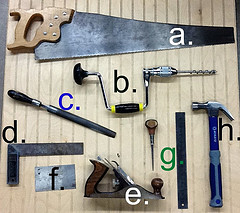
Finding and serving the “right” customers is the most important step you can take to improve your sales. Many small business owners feel that the task is easier said than done. As a result, they fail to align their business with the right customer segment. Even when they do attempt to do it they either go about finding the customer needs in ad-hoc fashion or they use wrong tools to segment the customer base.
As we have noted earlier, we firmly believe that segmenting the customers based on their needs as opposed to demographics or location can improve your sales significantly. But how do you go about finding what customers really need and want?
You can go and ask your Uncle Joe or Cousin Mark about their opinion, but that is not the representative sample of your customer base. To get an accurate and complete view of your customer needs it is important to deploy diverse set of tools. Below we discuss some of the tools we have used in our past experience.
- Customer Database – This is perhaps the easiest tool you can use to find out what your existing and past customers are looking for, provided you are using a decent Point of Sale system that can track and report on customers’ purchasing history. The new breed of tools such as the free iPad based POS system from Square are making it easier and cheaper to analyze the customer database for small business owners. When analyzing customer database your goal should be understand which of your products are of most interest to customers, when and how they are purchasing your products, where your customers are coming from, how often they are ordering from you and so on.
- Customer Surveys – In addition analyzing customer database you can also deploy low-cost, targeted surveys that provide additional insight into what your customers are looking for. We have discussed what customer survey tools you can use and what types of questions you should ask in the survey in earlier posts.
- Focus Groups – Focus groups are similar to surveys, but they also provide an opportunity to have live, interactive conversation with your customers. Large corporations, such as P&G, use focus groups regularly, although they are not as popular with small business owners.
- Informal Chat – For small business owners having informal chats with customers is more useful than conducting formal focus groups. For one thing, small businesses already have close relationship with their customers, which makes it easy for them to strike conversation. Also, it is expensive and time consuming to conduct focus groups. In an earlier post we described how listening to customer stories can help you understand their needs.
- Customer Observation – By keeping your eyes and mind open, you can uncover customer needs just about anywhere. Just watch how people are managing their daily lives and find what hassles they have to deal with. Watch a mother trying to maneuver a stroller with one hand, while holding a child on the other, and there is your opportunity to meet customer need for a device that can help them manage the stroller with one hand.
- Trends and Fads– Changing consumer trends and fads present a great opportunity for small business owners to jump on the bandwagon and make quick money. We all remember craze for beanie baby and silly bands. Observe your customers or even ask your kids to find out what the next big thing is. You don’t need to have huge success like the ones mentioned earlier. You can change your existing business model or products to take advantage of these trends and improve your sales.
Don’t settle with just one or two tools mentioned here. The best approach is to mix and match them to make sure you cover all the bases.
What other tools have you used to find customer needs? How successful have you been in using them? Let us know in the comments.







Great tips! Thanks for sharing. I think mixing and matching is the best way!
There are so many articles out there about focusing on your customer’s needs rather than your own personal or business needs, but yours goes beyond that and explains how to actually do this — thank you for the great ideas! We’re thinking about implementing a customer survey, but it seems that there’s a lot more that we can be doing to get to the bottom of our customer’s needs and expectations.